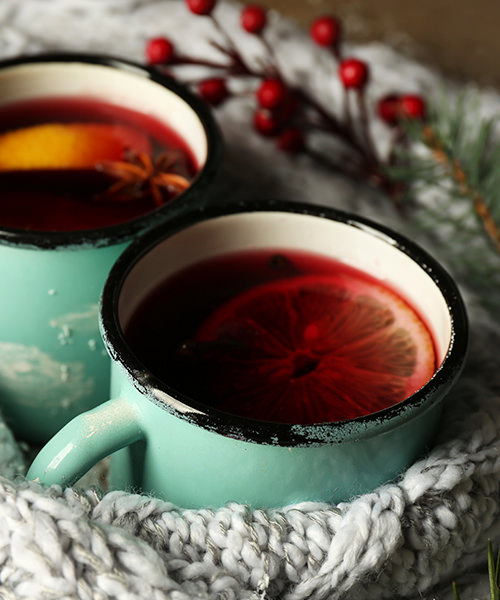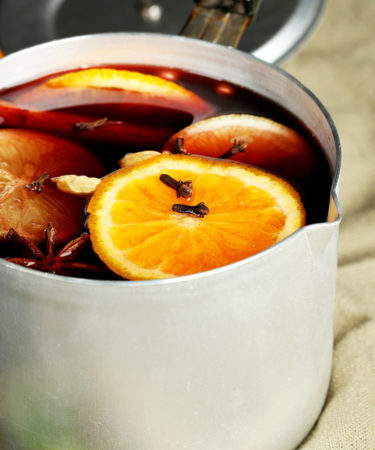The origins of mulled wine are murky, but the concept (masking subpar hooch with spice-rack staples) is as old as time. Greeks and Romans sugared and spiced runoff wine as early as the 2nd century. In the Middle Ages, folks lacking access to potable water spiked wine and cider with “medicinal” infusions like honey, saffron, bay leaves, and dates. (We drinkers have always been a resourceful bunch.)
These days, mulling spices are entirely optional — and eerily consistent. From Williams-Sonoma to Walmart, commercially packaged options comprise a near-identical mix of cinnamon, cloves, allspice, and nutmeg. Orange peel and star anise occasionally make an appearance; but medieval dates and saffron now seem as out of place in wine as they would at a CVS. What gives?
As with many American cultural touchstones (Champagne toasts, the Star-Spangled Banner), this one hails from hard-drinking Europeans.
Some associate the word “wassail” with shouty Christmas carolers but, apparently, the term stems from medieval German apple harvests. Orchard-adjacent communities sipped from a big bowl of warm, spiced cider they called “wassail” as a good-luck measure for the coming year’s harvest.
The cold-weather elixir spread across northern Europe, finding a foothold in England. By the time “wassailing” was immortalized in that English Christmas carol circa 1850, the concept of a communal bowl of something warm and boozy was irrevocably associated with the December holiday. “The wassail bowl itself was a hearty combination of hot ale or beer and spices and mead, just alcoholic enough to warm the tingling toes and fingers of the singers,” according to Reader’s Digest.
The association stuck. Mulled wine today features the exact same warming spices we use in holiday desserts like gingerbread or fruitcake. They are also remarkably similar to those in pumpkin spice lattes.
All of which begs the question: Why don’t we use mulling spices more often? Untethered to agricultural harvests or religious holidays, the flavor combination within is actually pretty versatile. Bon Appetit suggests using mulling spices in everything from coffee to French toast to steak. Other potential uses include vinaigrette and pancake syrup, per Southern Living.
If you have a tin of mulling spices gathering dust in your cabinet, consider this a call to arms. Or, try experimenting with a homemade version using our recipe below. The world is your wassail.

Recipe: “Traditional” American Mulling Spices
Ingredients:
- ¼ cup allspice berries
- ¼ cup whole cloves
- 10 whole black peppercorns
- 5 whole nutmeg
- 2 sticks cinnamon, each approximately 3 inches long
- 3 star anise pods
- 3-4 pieces of crystallized ginger, preferably organic*
Directions:
- Put the cloves, peppercorns and allspice berries on a cutting board. Roll the bottom of a heavy skillet over them to crush coarsely. Apply force, but not too much — you want crumbs, not dust. Put your crushed spices in a midsized mixing bowl.
- Repeat with nutmeg, cinnamon, and star anise.
- Wipe off your cutting board (no need to wash it!) and finely chop crystallized ginger.
- Add to bowl and mix all ingredients, using a spoon or your hands.
- Your homemade mulling spices will last up to six months in an airtight container.
* Nothing horrible will happen if you use inorganic crystallized ginger, but artificial colorings and sweeteners can lend an “off” taste when you steep your finished spice mix in liquid. For what it’s worth, I like Thrive Market Organic Ginger Cubes.
